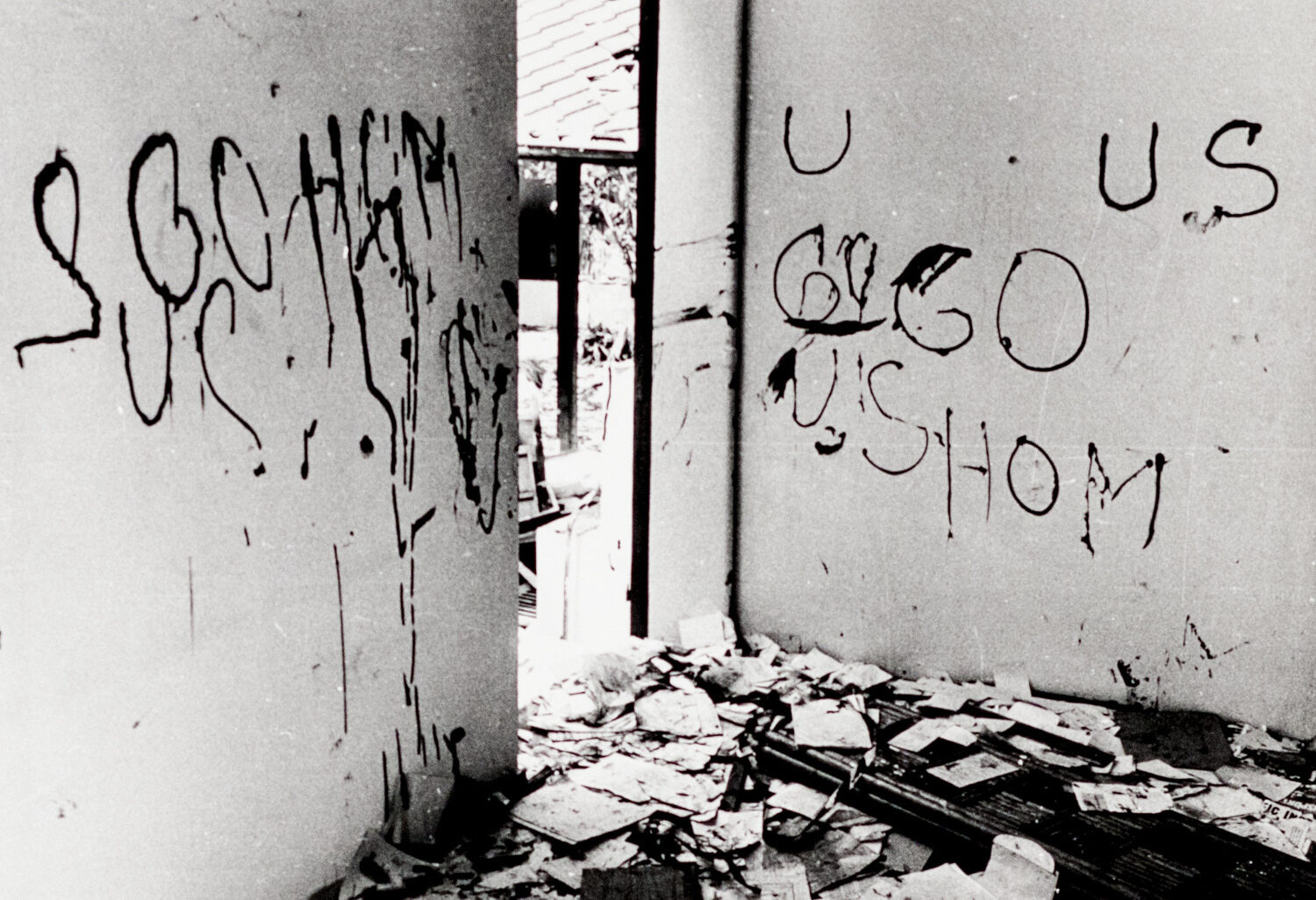"Social Coventry": the trials and tribulations of the Phnom Penh embassy
In the early morning of 11 March 1964, large crowds gathered outside the British and American embassies in Phnom Penh. Over the course of the day, the initially peaceful protest turned increasingly violent: cars were overturned, bricks and stones were thrown, the embassy gates were knocked down and the walls were graffitied with anti-American slogans.
Reports, telegrams and correspondence from AM’s Conflict in Indochina: Foreign Office Files for Vietnam, Cambodia and Laos document the events and aftermath of the attack on the British embassy almost in real time, the urgent and terse messages back to Whitehall standing out against the normally eloquent tone of Foreign Office correspondence:
Embassy Chancery damaged and ground floor sacked by organized mob 0300-0400 GMT.
No-one hurt. No security compromise. British Council also completely wrecked. Please inform all.
As embassy staff reported back to the Foreign Office, they began to suspect that the demonstration had been secretly organised by Cambodia’s premier, Prince Sihanouk. Sihanouk had for some time been pressing for international talks on Cambodia’s neutrality, hoping to put an end to American-backed incursions over the border against North Vietnamese forces and supply routes, and he blamed Britain and America for blocking these talks.
In the following weeks and months, British diplomats desperately attempted to rekindle friendly relationships with Prince Sihanouk, trying to arrange visits from high-ranking officials such as Lord Carrington and Malcolm MacDonald. They found themselves, however, in "social Coventry", forbidden from entertaining or being entertained by Cambodian officials.

FO 371/175435 – ‘The British embassy is graffitied with anti-American slogans. Images, including Crown Copyright images, are reproduced by courtesy of The National Archives, London, England. www.nationalarchives.gov.uk’
Events such as the Phnom Penh embassy attack demonstrate the fine balancing act played by the Foreign Office in the growing conflict in Indochina. On the one hand, the Foreign Office was keen to prevent the escalating violence which threatened to envelop the whole region. But on the other hand, British officials believed that the spread of communist influence in South East Asia would subvert British interests in the region. As a result, they were determined to support their US allies in propping up the anti-communist government in South Vietnam – hence, perhaps, the anti-American slogans painted in the British embassy by the demonstrators.
Visit Conflict in Indochina to discover more Foreign Office files about the growing crisis and upheaval in Indochina.
About the author
Alex Barr is an Assistant Editor at AM.
About the collection
Conflict in Indochina: Foreign Office Files for Vietnam, Cambodia and Laos is out now. The document quoted in this blog - FO 371/175435: ‘Political relations: UK: sacking of HM Embassy’ - is available open access for 30 days.
Recent posts

The blog highlights American Committee on Africa, module II's rich documentation of anti-apartheid activism, focusing on the National Peace Accord, global solidarity, and student-led divestment campaigns. It explores the pivotal role of universities, protests, and public education in pressuring institutions to divest from apartheid, shaping global attitudes toward social justice and reform.

This blog examines how primary sources can be used to trace the impact of young voices on society, particularly during pivotal voting reforms in the UK and the US. Explore materials that reveal insights into youth activism, intergenerational gaps, and societal perceptions, highlighting their interdisciplinary value for studying youth culture, activism, and girlhood across history.
